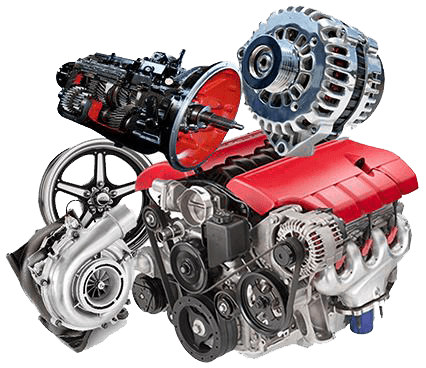Exactly how to Pick the Right Opel Corsa Engine for Your Vehicle
Exactly how to Pick the Right Opel Corsa Engine for Your Vehicle
Blog Article
Thorough Assessment of the Mechanical Elements of a Hatchback's Electric motor
Comprehending the elaborate workings of a hatchback's motor is comparable to unraveling an intricate puzzle where every item plays a crucial function in the overall performance of the automobile. opel corsa engine. From the integrated movements of cyndrical tubes and pistons to the exact timing of camshafts and crankshafts, each part runs in harmony to power the lorry. What genuinely sets a motor apart exists in the better details - the delicate dance of valves and timing belts, the precise shipment of fuel via injectors, and the spark that sparks it all through spark plugs. As we dig right into the inner functions of these mechanical marvels, a deeper gratitude for the symphony of elements that drive a hatchback forward arises.
Pistons and Cylinders

The performance and efficiency of a hatchback's engine rely greatly on the smooth procedure of the cylinders and pistons. Routine upkeep and monitoring of these parts are crucial to make certain optimal engine performance and durability.
Crankshafts and camshafts
Camshafts and crankshafts play important functions in the operation of a hatchback's internal burning engine, facilitating exact timing and conversion of direct movement into rotational energy. The camshaft, located within the engine block, controls the opening and closing of the engine valves at particular periods. As the camshaft rotates, its lobes press against the valves, allowing air and fuel right into the combustion chamber and expelling exhaust gases. This procedure integrates with the movement of the pistons to ensure ideal engine efficiency.
On the other hand, the crankshaft, attached to the pistons by means of linking poles, converts the direct motion of the pistons into rotational motion. This rotational power is then transferred to the transmission and inevitably to the wheels, thrusting the lorry forward. The exact control in between the camshaft and crankshaft is vital for the engine to run efficiently and produce power successfully. Any imbalance or malfunction in these elements can bring about engine performance issues and prospective damages. Routine maintenance resource and timely substitutes are essential to ensure the smooth operation of these important engine elements in a hatchback.
Valves and Timing Belts
Playing a vital role in the synchronization and procedure of a hatchback's internal burning engine, the valves and timing belts operate in combination with the crankshafts and camshafts to ensure ideal performance. Shutoffs manage the flow of air and gas into the combustion chamber while expelling exhaust gases. The timing belt, likewise called the camera belt, integrates the rotation of the camshaft and crankshaft, guaranteeing that the shutoffs close and open at the proper times in regard to the piston placement. Proper timing is vital for the engine to operate successfully and avoid damages as a result of interference between moving parts.

Fuel Injectors and Ignition System
Fuel injectors and ignition system are critical parts in a hatchback's engine system, accountable for the reliable shipment of fuel and ignition of the air-fuel blend. Gas injectors play a crucial role in the burning process by specifically spraying fuel right into the combustion chamber at the right moment and in the correct quantity. This regulated delivery makes certain optimum gas efficiency and power outcome. Modern hatchbacks commonly make use of digital gas injection systems that can adjust fuel delivery based on various factors such as engine tons, rate, and temperature level.
Properly operating spark plugs are critical for engine sites performance, fuel effectiveness, and discharges regulate. Routine assessment and upkeep of both fuel injectors and stimulate plugs are necessary to guarantee the engine operates smoothly and successfully.
Cooling System and Lubrication
Provided the vital duty of maintaining optimal engine efficiency and effectiveness in a hatchback, the cooling system and lubrication devices are integral parts that make sure correct functioning and durability of the vehicle. The lubrication system in a hatchback includes the oil pump, oil filter, and various lubricating substances that lower rubbing within the engine. Together, the cooling system and lubrication devices play an important duty in keeping the hatchback's engine running efficiently and efficiently.
Final Thought

Pistons and cyndrical tubes are integral components within the internal burning engine of a hatchback, liable for converting fuel into mechanical energy. The camshaft, located within the engine block, controls visit site the opening and closing of the engine shutoffs at specific periods.Playing a vital role in the synchronization and operation of a hatchback's interior combustion engine, the shutoffs and timing belts function in combination with the crankshafts and camshafts to ensure ideal performance.Gas injectors and trigger plugs are critical components in a hatchback's engine system, accountable for the reliable distribution of fuel and ignition of the air-fuel mixture. Modern hatchbacks often utilize digital gas shot systems that can change gas delivery based on different factors such as engine temperature, speed, and lots.
Report this page